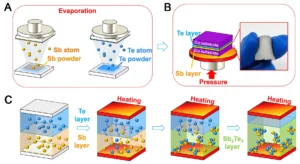In the realm of electrical engineering, Kirchhoff’s laws play a fundamental role in analysing and solving complex electrical circuits. Developed by German physicist Gustav Kirchhoff in the mid-19th century, these laws are essential tools for engineers and technicians dealing with circuit analysis. Kirchhoff’s laws, comprising Kirchhoff’s Current Law (KCL) and Kirchhoff’s Voltage Law (KVL), provide a systematic approach to understanding the flow of current and voltage in interconnected circuits.
Kirchhoff's Current Law (KCL):
KCL, also known as Kirchhoff’s first law, states that the total current entering a junction or node in an electrical circuit is equal to the total current leaving the junction. In other words, the law emphasises the conservation of electric charge at a point in a circuit.
Mathematically, KCL can be expressed as follows:
Σ Iin = Σ Iout
Here, Σ represents the sum, and Iin and Iout are the currents entering and leaving the junction, respectively.
Example of KCL:
Consider a simple circuit with three branches connected to a single node. Let’s label the currents in each branch as I1 , I2 and I3. According to KCL, the sum of these currents at the node must be zero:
I1 + I2 + I3 = 0
This equation illustrates the conservation of charge at the node.
Kirchhoff's Voltage Law (KVL):
KVL, or Kirchhoff’s second law, states that the sum of the electromotive forces (EMFs) and voltage drops in any closed loop of an electrical circuit is equal to zero. In other words, the total voltage around any closed loop in a circuit is equal to the total voltage supplied to that loop.
Mathematically, KVL can be expressed as:
Σ Vloop = 0
Here, Σ represents the sum, and Vloop is the sum of EMFs and voltage drops around a closed loop.
Example of KVL:
Consider a simple series circuit with a battery and three resistors. The voltage across the battery (Vbattery) must be equal to the sum of the voltage drops across the three resistors (VR1 , VR2 and VR3 ):
Vbattery= VR1 + VR2 + VR3
This equation illustrates the conservation of energy in a closed loop.
Application of Kirchhoff's Laws:
Kirchhoff’s laws find extensive application in various electronic devices, such as amplifiers, transmitters, and power supplies. They are particularly useful in analysing circuits with multiple interconnected components and loops.
Conclusion:
Kirchhoff’s laws, encompassing KCL and KVL, are indispensable tools for understanding and analysing electrical circuits. These laws provide a systematic and rigorous approach to circuit analysis, ensuring the conservation of charge and energy in interconnected systems. Engineers and technicians rely on Kirchhoff’s laws to design, troubleshoot, and optimise a wide range of electronic devices and systems.




